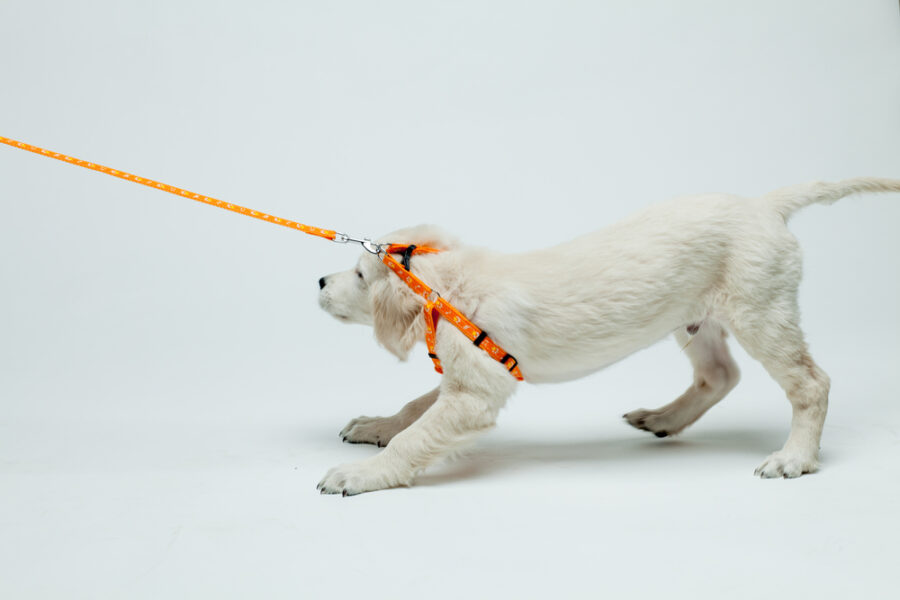
From pulling on the leash to barking too much, our dogs sometimes engage in behaviors we don’t want. Here are six simple ways to change those behaviors and achieve a happy, well-adjusted dog.
Does your dog constantly jump up on people? Does she pull on the leash, bark excessively, or ignore you when you call her? Take heart! She’s not deliberately trying to annoy you. Know that good behavior and a more harmonious relationship between you and your dog are closer than you think. This article features six easy tips to help you overcome those unwanted behaviors in your best friend.
1. See the World from Your Dog’s Point of View
Your dog isn’t misbehaving because he’s naughty, vengeful, or trying to be dominant. He’s just behaving like a dog and doing his level best to figure out how to live in a human world. Trying to see the world from his point of view will help you understand him better and lay the foundation for successful training.
- Discover what motivates your dog to do what he does. Interaction, entertainment, or just getting out of a stressful situation are all motivators for dogs.
- Set your dog up for success by practicing desired behaviors in a non-distracting environment.
- Communicate clearly, using obvious physical cues and hand signals.
- Always be patient, kind, dependable, and consistent.
2. Don’t Correct Your Dog
Setting your dog up to do something you don’t want, then correcting her when she does it, is unfair. It’s also not an efficient way to train. Dogs learn to associate certain environmental cues with performing a behavior. Instead of saying “no” and expecting your dog to understand, you need to identify the environmental cue that causes the behavior and help her develop a habit of responding to that cue with a different behavior.
3. Set a Behavior Goal
If you want your dog to stop a behavior you don’t like, you’ll need to teach him what to do instead. For example, if your dog jumps up on guests, the first behavior goal is for him to keep all four paws on the floor. Start showing that keeping four paws on the floor around familiar people brings treats and interaction. After he has that down, you can practice with guests.
4. Make a Behavior Plan
A behavior plan is a roadmap that defines the behavior you want your dog to learn and how you’ll get there. Your plan should include the following elements:
- A behavior goal: Make the goal behavior as physically simple and easy to understand as possible. Identify and note down progressive steps toward that goal.
- A management plan: How will you prevent your dog from practicing unwanted behaviors? What management tools will you use?
- Reinforcers: Which rewards (e.g., treats, praise) will motivate your dog? What will you use and when?
- Schedule: When and how often will you work with your dog to teach him new skills? Train in multiple short sessions throughout the day for maximum benefit.
5. Use Behavior Management
Use behavior management to prevent unwanted behavior until your dog achieves the goal behavior 100% of the time. Dogs will repeat any behavior that works for them, so during the training period, avoid putting your dog into situations where you know she’s likely to behave poorly. Be sure to reintroduce the triggering environmental cue after she solidly learns the goal behavior in its absence. Practice makes perfect.
6. Learn What Motivates Your Dog’s Behavior
Dogs do what they do to get what they want. From a dog’s perspective, the whole world is full of potential behavioral reinforcers, and they don’t always come from you. It’s important to identify the reward that’s reinforcing a behavior to prevent your dog from getting it until he does what you want him to do.
Rewarding your dog with tasty food is the most convenient and powerful way to reinforce desired behavior. Find small, soft, moist, delicious-smelling treats that your dog loves. Save these special treats for when you’re working on your dog’s behavior goals. This will help build positive associations and conditioned behavior patterns.
If your dog is behaving in ways you’re unhappy with, remind yourself that he’s not doing it because he’s mad at you or deliberately acting out. He’s just being a dog. By following these steps, you can put an end to unwanted behaviors by teaching your dog what to do instead.
To read more articles about dogs and pet care, visit Pet Lovers Diary.
